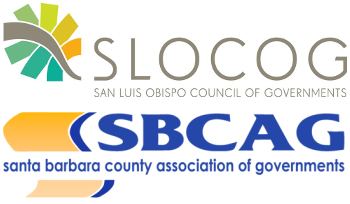Make an impact with your National Bike Month commuting program.
Every year since 1956, May has been designated as National Bike Month. Sponsored by the League of American Bicyclists, National Bike Month offers businesses and communities a wealth of ways to encourage active, sustainable commuting alternatives.
National Bike Month is a great opportunity to improve health and fitness, reduce traffic congestion and pollution, and discover new ways of looking at your community. Bike-to-work programs enable businesses and organizations to get more people involved, and provide a perfect opportunity to encourage commuters to make a long-term transition to pedal power.
Building a successful bike-to-work program means getting as many people involved as possible. Here are a few winning tips to help you drum up robust participation rates for your smart commute challenges and events:
Start with a survey
When designing your bike to work challenge, the best place to start is with a survey. This will help you generate information-based insights into important factors like the experience level of riders, how far people will be commuting, and what routes they will be following.
From there, you can divide the respondents into groups that reflect their enthusiasm and experience level. This allows you to focus segmented promotional efforts on specific groups of people. Use strategic insights to help turn people with middling levels of interest into enthusiastic participants who can’t wait to get started. After all, promotional efforts are best directed at those who are on the fence instead of those who are already jumping at the bit to take part.
Create incentives
Gamification incentives, like prizes and rewards programs, give participants an extra bit of motivation to get involved in your bike to work challenge. Playing for points or pride can work in the short term, but commuter challenges work best when they also encourage people to make better use of smart commuting alternatives over the long run.
To that end, remember that offering rewards and prizes for continuing to commute by bike is a surefire way to get people to commit to behavior change over the long haul. You can also use short-term challenges as test runs for longer-term or permanent programs to see what works, what connects with participants, and where you need to improve your strategy.
Promote your program strategically
When you get around to launching your promotional campaign, build in time to analyze the results. Instead of making an all-in push from the get-go, leave wiggle room that allows you to make adjustments. This will help you bring more people into the fold, ultimately supporting a more successful program.
You can also learn more from our collaboration with Google on creating a strong and successful bike-to-work initiative.
Pair inexperienced riders with “bike buddies”
Bikepooling and “bike buddy” programs are effective options for reaching people who would like to bike to work but don’t feel comfortable riding alone. These programs match new riders with experienced bike commuters who can show new biking enthusiasts the ropes and help them navigate city traffic safely and confidently.
An added benefit of the “bike buddy” approach is that it helps improve workplace collegiality and foster increased cooperation among your company’s commuter base. People can form friendships and expand their professional networks through the connections they make by taking part in smart commute challenges and events.
Expanding beyond the challenge: Emerging ideas for driving long-term mode shift
Encouraging long-term behavior change is challenging, but one strategy that’s catching on is the idea of trading parking permits for bicycles. Organizations and institutions in both the public and private sectors have already leveraged this strategy to great success, and it provides a powerful incentive that reduces parking demand, keeps parking costs in check, and helps build a healthier, happier community.
Consider it as a potential end goal of your bike to work challenge!
Power your commuter challenges and incentive programs with RideAmigos
The RideAmigos software platform has everything you’ll need to design, promote, manage, and administer bike to month challenges and other commuter programs. Our industry-leading solution supports survey distribution, data analysis tools, incentive tracking, statistical management, and a complete range of other features for administrators and commuters alike.
To learn more, get started with RideAmgios today!

